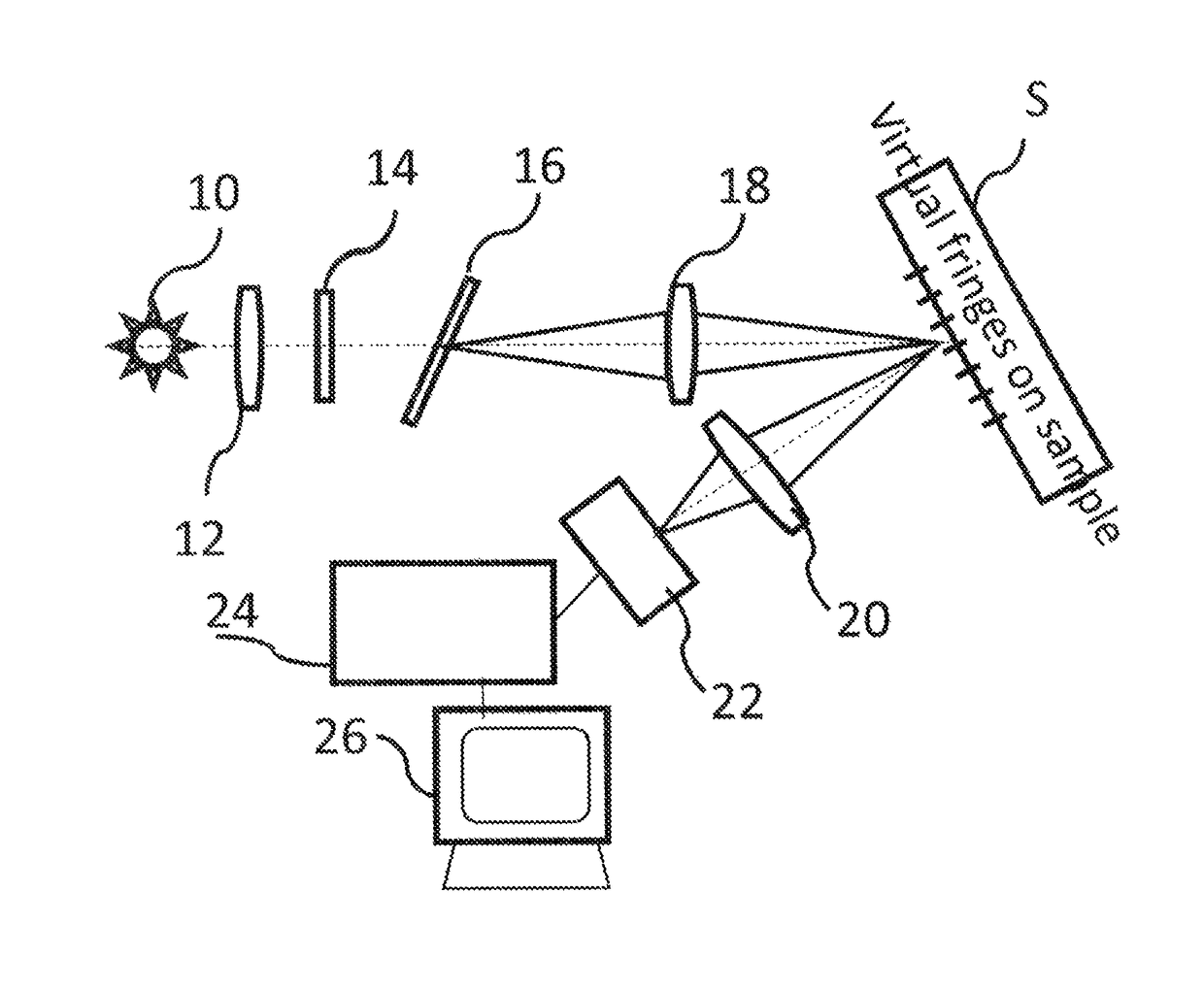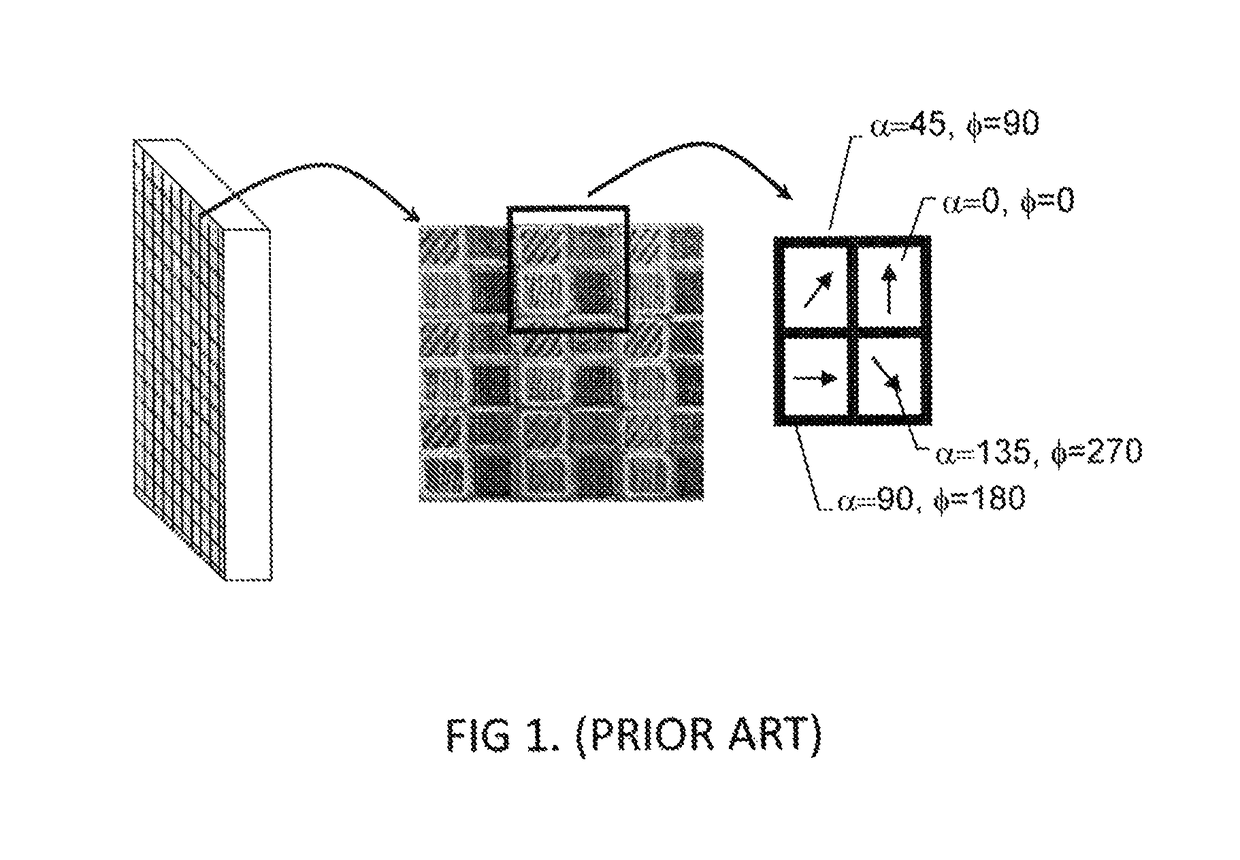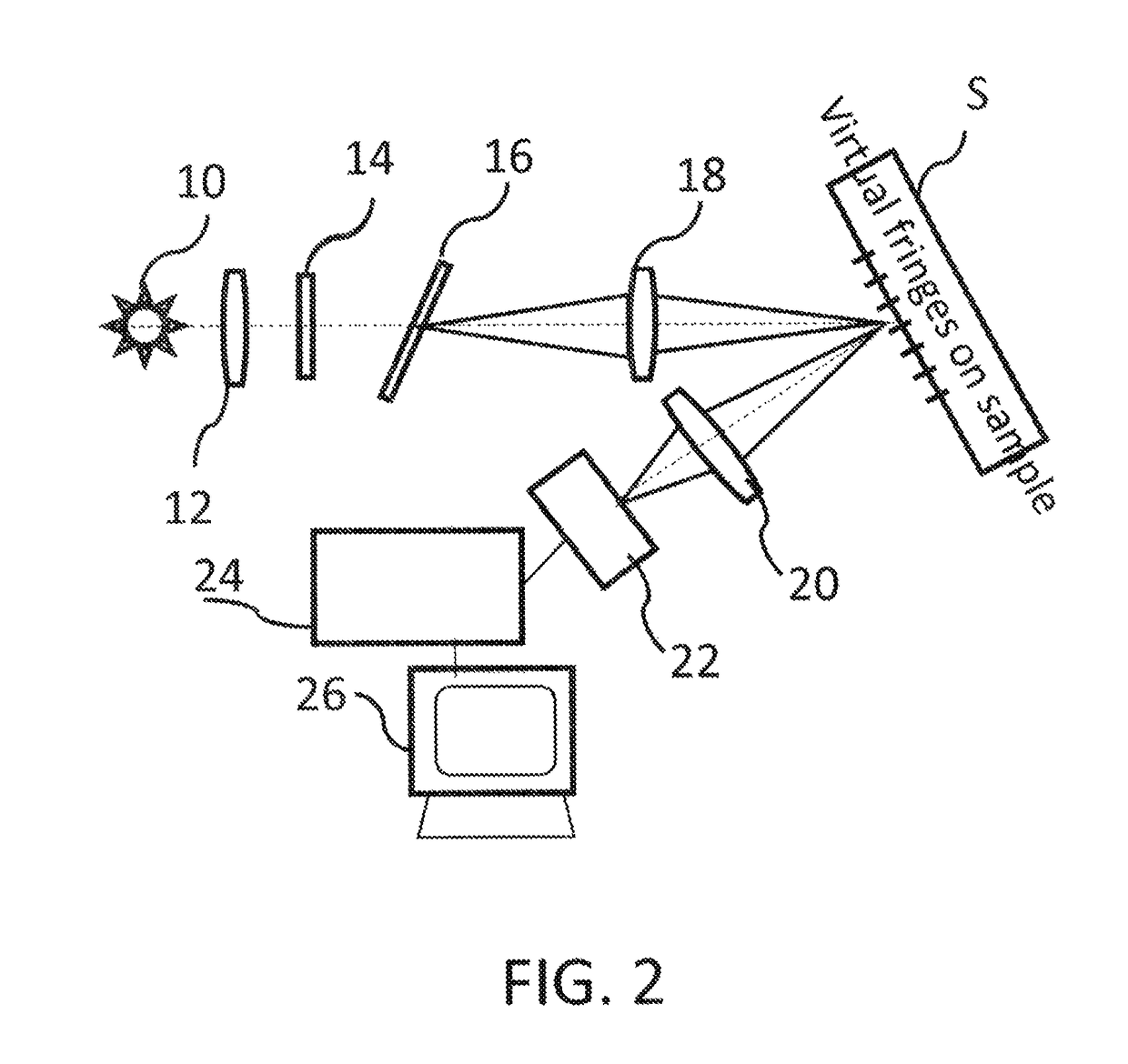(Some methods use a
single frame with carrier frequency fringes, but they are very limited in object range measurement.)
These conventional approaches have the
disadvantage that they are sensitive to vibration and / or motion of the part or test
system; that is, the
system-to-part distance must not change within the time of acquisition of the multiple frames required for analysis.
Therefore, these systems are typically not used outside environments that are vibration-isolated and they are practically impossible to implement in hand-held instruments, such as required for in-situ surface
metrology of large precision-machined components.
They are equally unsuited for on-
machine metrology such as is needed in the newly evolving field of additive manufacturing (also called
stereolithography), for example, where the surface being produced can be improved via
continuous monitoring of the manufacturing process.
High-precision metrology systems such as 3-D microscopes, industrial styli, and atomic force microscopes can achieve nm-level resolutions across a wide variety of surfaces, but are slow for measuring large areas and are not portable; thus, they are incompatible with shop-floor operation.
Coordinate measuring machines (CCMs),
laser trackers, and 3-D stereoscopes can measure large components in situ and rapidly, but they cannot achieve
micrometer-level lateral and vertical resolutions.
Therefore, they are also not suitable for measuring many manufactured parts, such as
turbine blades, drive shafts, transmissions and solar panels, all of which require in-situ metrology with
high resolution for accurate characterization during manufacture and for subsequent maintenance operations.
Minor surface imperfections on edges or in other
critical surface areas can have a dramatic effect on performance or cause the failure of machined components, particularly in high-stress environments.
For example, it is estimated that currently the prevention of
corrosion-related failures accounts for nearly $700 million in losses each year due to unnecessary part-replacement cost in the
turbine industry alone.
It is just not possible to measure many of these components with traditional metrology methods because they are too large to
handle and cannot be moved to a laboratory-based measurement facility without destructively sectioning them or subjecting them to a time-consuming and difficult process of measurement by replication (i.e., repeatedly making a small negative of the area of interest on a test piece that is then measured separately), as is often done with powertrains, turbines and displays, for example.
Handheld
stylus systems, having neither the ability to measure near edges due to the
fragility of the measurement styli nor the ability to support applicable ISO surface standards (because they can only quantify 2-D information for pattern inspection or discrete defect area, for instance, but not 3-D topographic information), are limited in the scope of their application.
Three-dimensional
laser scanners and stereoscopes, while excellent at performing geometric checks of components, cannot achieve better than about 15 μm of
lateral resolution and hundreds of microns of vertical resolution; thus, they can neither check roughness nor shape of small features to the level required for
quality control and maintenance of many precision parts.
CMMs can achieve high form resolution but do not have adequate sampling density for defect or small-feature quantification.
However, these
microscope-based systems are also neither portable nor amenable to shop-floor environments, as they require air isolation to mitigate vibration in order to achieve sub-micron precision.
Similarly, interferometric inspection tools measure small areas and are limited to laboratory-bench use because they also require
vibration isolation.
Therefore, neither of these techniques is suitable for many industrial settings or for in-situ metrology of large parts.
 Login to View More
Login to View More  Login to View More
Login to View More 


